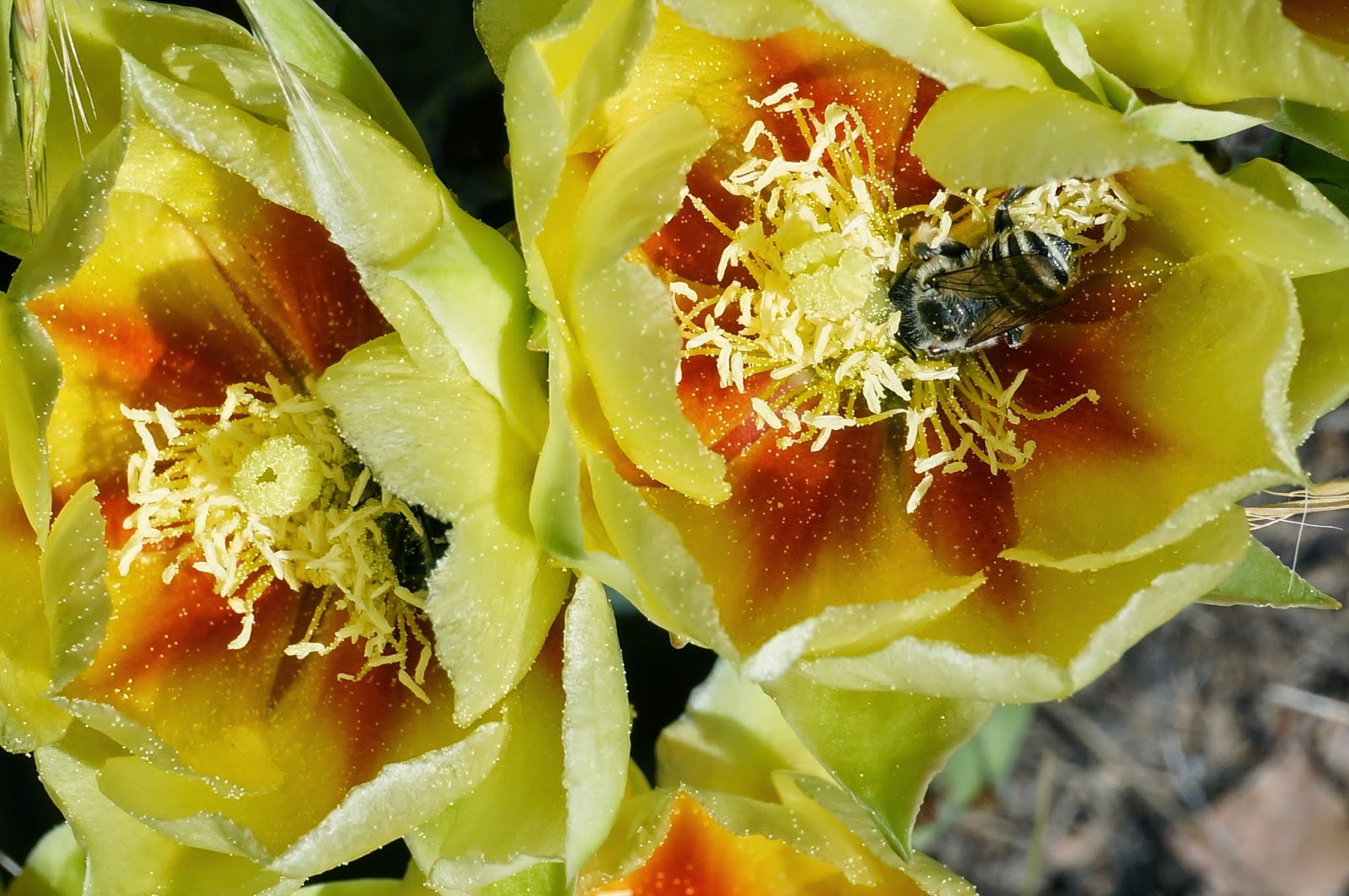 |
| Honeybees- there are plenty of these girls in my urban prairie |
I've been struck by the depauperate native bee community in
my vacant lot prairie, especially when compared with the countless butterflies
I encounter on my walks. At first
I thought I simply got up too early for them. Native bees tend to fly mid-day,
and I do most of my walking around dawn. However, after scoping out the lot at various
points in the day, my species list of native bees did not greatly improve. I
became concerned-- what do the bees know? Did someone salt the earth of this
vacant lot? Is it a superfund site?
...Probably not. While it seems strange that there would be
such a mismatch in bee and butterfly richness, in reality bees and butterflies
have very different needs. It's true that both are invertebrate pollinators
that feed on nectar. However, butterflies don't build nests, and bees don't
have free-ranging larval stages dependant upon a few host plants. I can't help but wonder if butterflies,
being less limited by parental responsibilities in their travel (heck- think
of the monarch migration!), range further and exploit more isolated stands.
That said, I have seen a ton of honeybees foraging in the
dense blooms of the vacant-lot prairie.
There must be a hive nearby. Beekeeping is illegal inside Fort Worth
city limits, so we either have a renegade beekeeper or a feral hive. I'm hoping there's an outlaw apiarist
in the community. I like the sound of it, and any feral honeybees around here
are likely to be africanized.
The two species of native bee I've seen are one male Svastra spp. and one carpenter bee (Xylocopa virginiana). I wish I had pictures of the diverse butterflies to include in this post, but they are simply too quick for my camera (especially when they are fleeing my snap-happy puppy dog's pointy teeth). I did, however, manage to collect a specimen of the Svastra.
 |
| Svastra petulca (?) male, collected on Gaillardia pulchella |
------
I have documented 25 species of blooming native wildflower in the vacant lot so far, plus 2 more in the surrounding neighborhood. See more pictures of this week's 3 additions to the vacant-lot wildflower list after the jump.






















